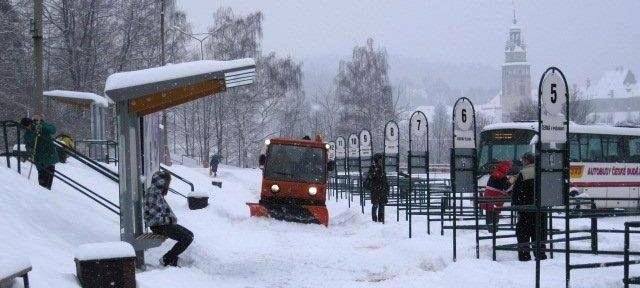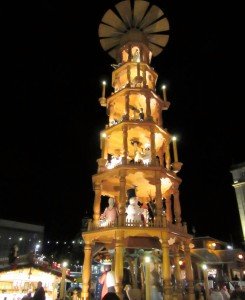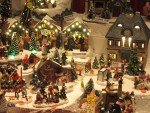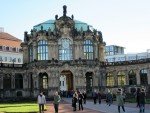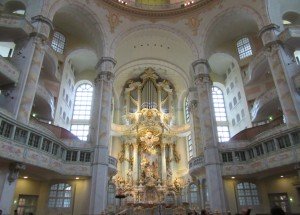Wow, we were impressed with Dresden, its Christmas markets and its people. Of course it doesn’t have the beauty and charm of Prague but we found the people exceptionally friendly and the markets were clean and very charmingly decorated and seemed to offer better products and food.
They all had a Christmas pyramid as well. These are a traditional toy or decoration only a few inches high and powered by candles. Now they are huge and elaborate.
Dresden is a pleasant train ride from Prague  along the Labe River that becomes the Elbe in Germany. Near the border is the Strěkov Castle privately owned by the Lobkowicz family whose palace at Prague Castle we especially enjoyed.
along the Labe River that becomes the Elbe in Germany. Near the border is the Strěkov Castle privately owned by the Lobkowicz family whose palace at Prague Castle we especially enjoyed.
The Striezelma
 Quote from Karin: “Going to the Christmas Market at night is really special! It takes on a completely different look! The smells of the food cooking in the open air, the mulled wine, the lights, the stalls; it is all very exciting!”
Quote from Karin: “Going to the Christmas Market at night is really special! It takes on a completely different look! The smells of the food cooking in the open air, the mulled wine, the lights, the stalls; it is all very exciting!”
Here are a few shots of booths, pyramids and music. I especially enjoyed seeing the flame broiled salmon because I had wild Pacific salmon cooked that way as a young man and never tasted its equal since. (Click to enlarge or to play the video.)
Since our time was limited, not to mention our energy level, we looked at a lot of the buildings in old town but did not go inside any museums.
The gold statue on top of the glass dome is Fama (means ‘rumor’), a Roman goddess described as having multiple tongues, eyes, and ears. She is also said to have lived in a home with 1000 windows so she could hear all that was being said in the world.
In front of the Cathedral is a stone with a large N commemorating where Napoleon reviewed his troops before a victorious battle.
The Frauen Church was our favourite because we went inside–and I bought Karin a charm for her bracelet that depicts this symbol of rebuilding Dresden.
We took the tram into Aussere Neustadt (Outer new town) to see what a normal neighbourhood was like–much like Prague with graffiti and all–and to see the Old Market Hall and the Pfund Dairy Restaurant
Everywhere we went we saw references to Augustas, Dresden’s equivalent to Prague’s Charles IV. He was one of a long line of local Saxony rulers, all of which are depicted in The Fürstenzug (Procession of Princes), the world’s largest porcelain artwork made with tiles from nearby Miessen. This photo shows a small part.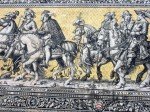
So I will close with a great photo. It looks like a collage but is just good composing by my star photographer and researcher, Karin.
